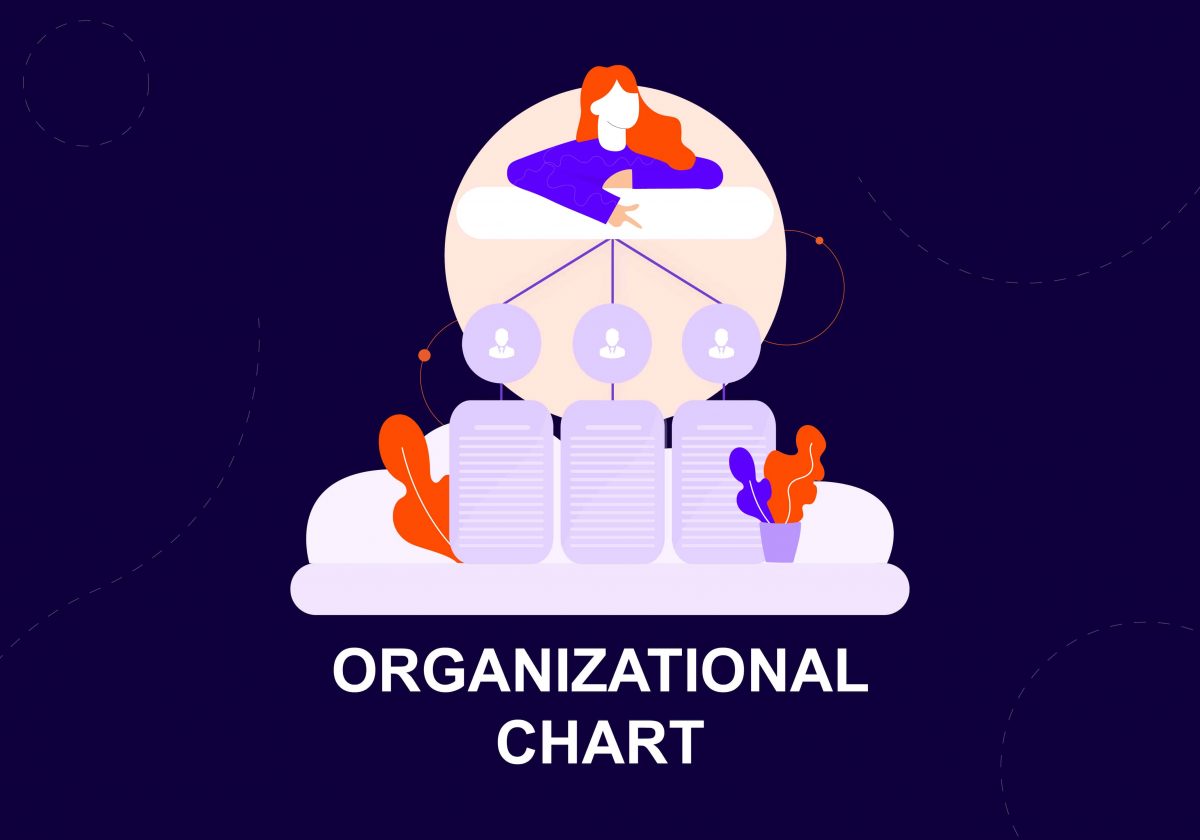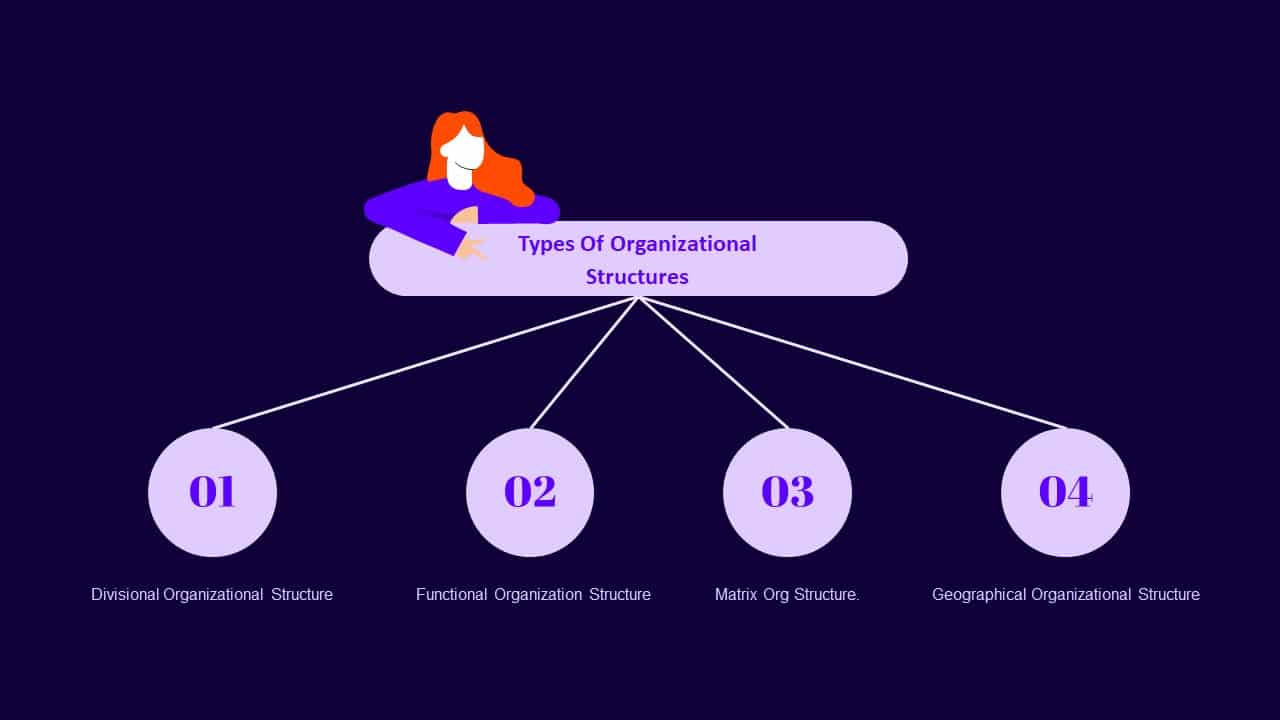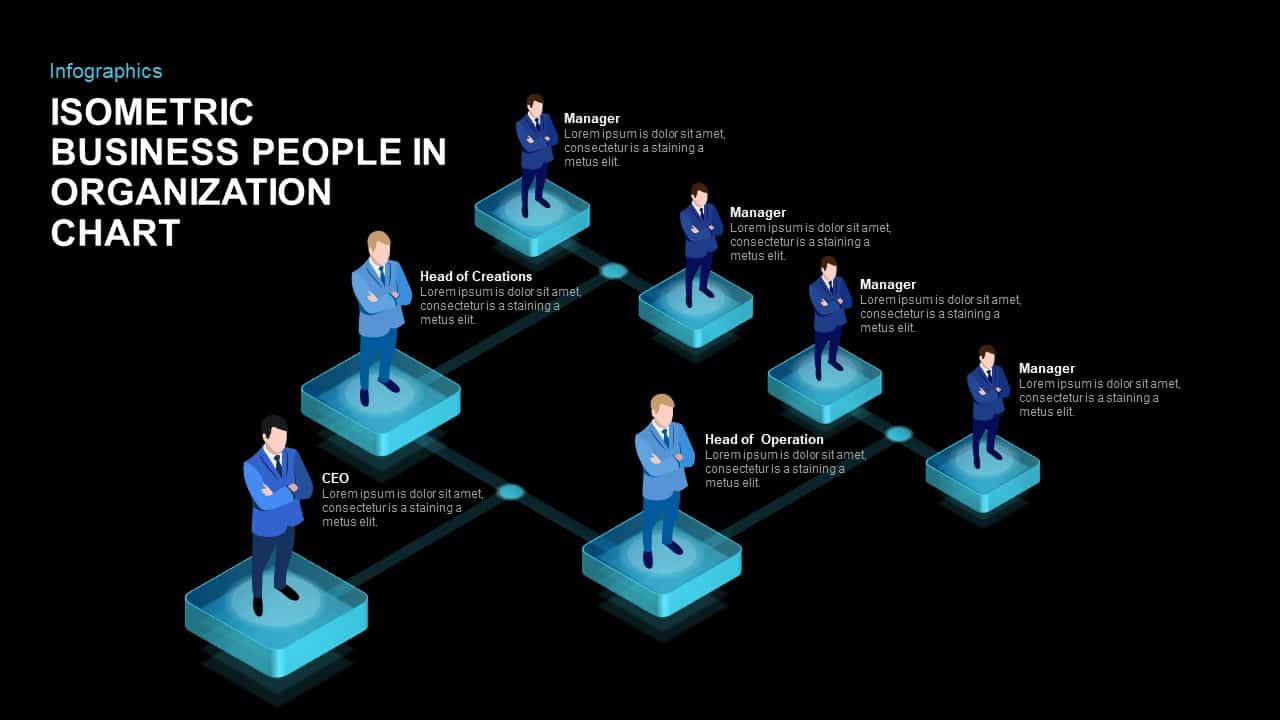Uses of organizational chart for presenting company work structure

An organizational structure is a system used to define a hierarchy within an organization or company. Every company has its own work process that functions for the achievement of company vision and mission. To achieve the targeted goals, a company should have a well-defined structure, which determines the roles and responsibility of each staff member. It defines each job, its functions and where it reports to within the organization. This structure is developed to establish how an organization operates and supports an organization in attaining its goals to allow for future growth. Check out Org Chart PowerPoint template also our blog on modern org chart template PowerPoint.
The structure is illustrated using an org chart template. It shows the internal composition of an organization. The staff and positions that represented by boxes or other shapes, some organizational templates shows photos, contact information, position, rank, name, icons and illustrations. Uses of organizational chart is that it helps to create a clear visual display of the hierarchy and ranks of different people, jobs, and departments that make up the organization. Organizational charts are known by different names; org charts, organization charts, hierarchy charts, workflow charts, organograms and company work structure charts or breakdown charts.
History of the organizational chart
In 1855, Daniel McCallum an American railroad engineer and general of the New York and Erie road designed a chart for depicting divisions of administrative duties and showing the number and class of employees engaged in each department. The railroad diagram looked like a flowery tree and was meant to illustrate the highly complex nature of the New York and Erie railway system. He was a Scottish-born genius. However, the term “Organizational chart” took another 50 to 60 years to come into general use. A consulting engineer Willard Brinton used the term in 1914 in his famous book “Graphic method for presenting facts”.
A hierarchy chart is a tree diagram that shows the breakdown structure of an organizations employee deployment.
Types of organizational structures

There are several types of organizational structures each defined to meet the needs of organizations that function differently. Depending on your needs and requirements you can choose a suitable one. The types of organizational structure include divisional, functional, matrix and geographical.
Divisional organizational structure
Divisional organizational structure splits employees into segments that correspond to a particular product, services or markets. Each division has some degree of autonomy, complete with functional units such as operations, personnel, marketing and research and development departments designed to focus on particular markets and product lines.
Functional organization structure
A functional organization structure is a hierarchical organization pattern wherein people are grouped based on their area of specialization. These persons are managed by a functional manager with proficiency in the same field. This experience and knowledge help him to effectively utilize the skills of employees, which ultimately help organizations in achieving their business objectives. Staffs are classified according to the function they perform within the organization in this kind of company structure.
The org chart PowerPoint for a functional organization structure shows the chairman, vice chairman, CFO, managers, sales department, customer service, administration, etc. each department will have a head who will be responsible for the performance of his/her section. The communication flows start with the department head to the top management. This type of org structure is ideal for manufacturing industries.
Matrix org structure.
A matrix organizational structure is one of the most intricate reporting arrangements an enterprise can instrument. It is a company structure in which the reporting relationships are set up as a network, or matrix, rather than in the traditional hierarchy. In other words, it shows the dual reporting relationship of an employee- generally to both a functional manager and a product manager. A matrix, the organization is a combination of two or more types. It is ideal for reporting complicated relationship. For instance, you have a complex role while reporting to two bosses.
Geographical organizational structure
Geographic organization structure is a company ladder divided on the basis of geographic location in which company functions which is controlled by a centralized head office. This kind of organizational structure serves the distinct needs of various different groups within and outside the country. It helps to understand local customer preferences which change according to geographic locations.
All the frameworks discussed above can be illustrated by using PowerPoint templates. The hierarchical org chart is the most common type that shows the hierarchy on the basis of power and rank. A matrix org chart is used for depicting when an individual has more than one manager. A flat org chart or horizontal org chart typically consists of two levels, in the upper layer, the top administrators, and the lower layer, the workers. In companies like this, employees have more responsibility and are directly involved in the decision-making process.
Uses of organizational charts
Org charts are beneficial for setting out relationships in your organization and confirming that everyone recognizes how to share essential information. Organizational charts are great tools to draw the organization structure. Through this, you can illustrate the roles and responsibilities of each employee and how the chain of command passes through different sections, and who is responsible for what. Fundamentally, org charts benefit users for its visual communication of information which is effective than oral or textual content. It helps build and design the organization structure to meet business goals. It can guide the employees to know their rights and responsibilities. It also shows the relationship between staff members. Further, the uses of organizational charts is that it is easy to identify whether the officer’s workload is too heavy. It helps to restructure the work allocation on the basis of performance and relationship such as reducing inefficiencies by rearranging roles. Organization structure chart help in figuring out the details of a new hiring initiative.
Corporates and SMEs tend to use an organizational chart to structure their business better and keep competitive in this fluctuating market. An organizational chart can help HR departments to understand how the company is staffed, whether it is beneficial or not, or need adjustments to enhance business accomplishments. Uses of organizational charts for developing your workforce with appropriate changes in the structure. If the company expands, the organizational structure allows room for growth. This can include adding extra layers of management, new segments, expanding one or several functional areas or appointing new executives.



